Abstract
PURPOSE: Most patients with accommodative esotropia are first examined between the ages of 6 months and 2 years. This paper discusses unusual presentations of accommodative esotropia that occur outside of this age-group and/or have a precipitating event that triggered the esotropia. In a series of patients who were from 5 to 11 years of age, trauma was the precipitating event. In some of the patients under 6 months of age, high myopia, as well as a moderate to large amount of hyperopia, was the cause. In 1 teenager, diabetic ketoacidosis precipitated accommodative esotropia. METHODS: We reviewed all of our records for the past 25 years involving patients with a diagnosis of esotropia, and we found 17 patients who had unusual presentations of accommodative esotropia. Of 8 who were under the age of 6 months, 2 had high myopia and 6 had moderate to large amounts of hyperopia. Nine patients were older than age 5. Eight of the 9 had suffered trauma associated with the presentation of accommodative esotropia, and 1 patient's accommodative esotropia was associated with diabetes. The patients with myopia received their full myopic correction. The children under 6 months of age with hyperopia received their full cycloplegic refraction, and the children over age 5 received the most plus that they were able to accept in a noncycloplegic state consistent with good visual acuity (at least 20/30 in each eye). RESULTS: In 17 patients, accommodative esotropia was initially controlled with glasses. In a few of the trauma cases, bifocals were required for control of near deviation. Only 2 of the patients, in whom onset was under 6 months of age, came to surgery. One had hyperopia controlled for 2 years with glasses, and the other had myopia controlled for 3 years with glasses. CONCLUSIONS: Accommodative esotropia can occur prior to 6 months of age. It can also occur in older children (5 to 14 years of age) and can be precipitated by trauma or diabetic ketoacidosis.
Full text
PDF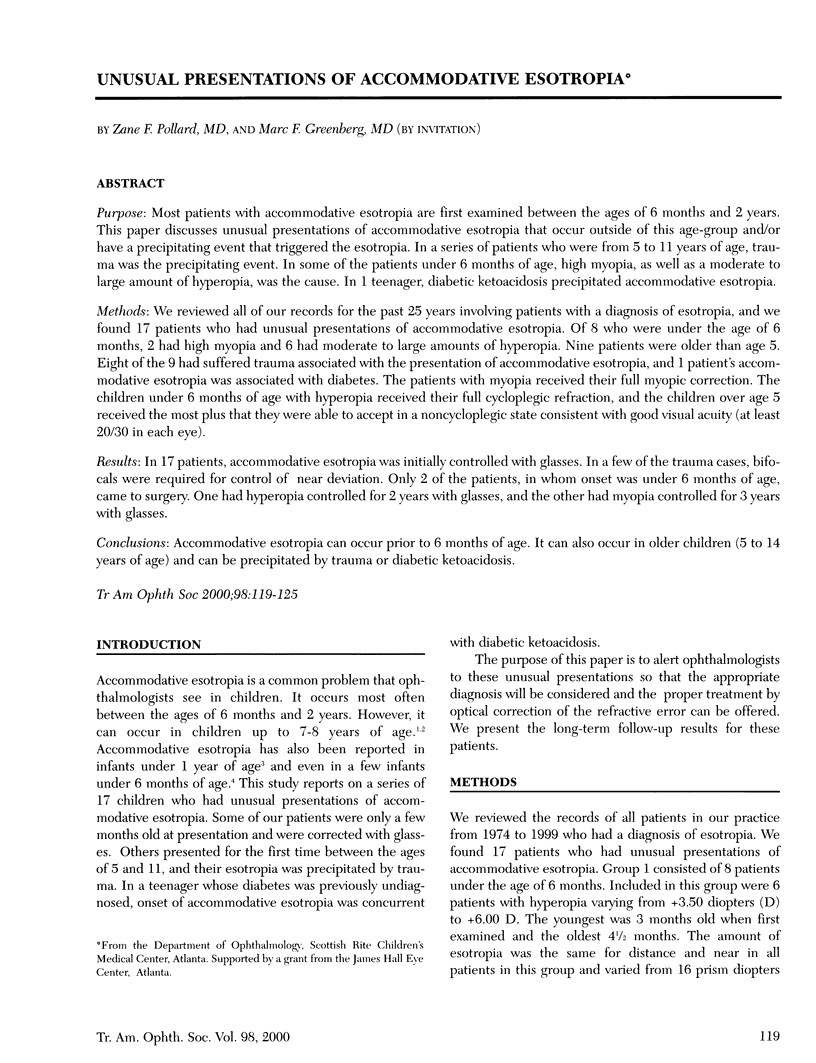
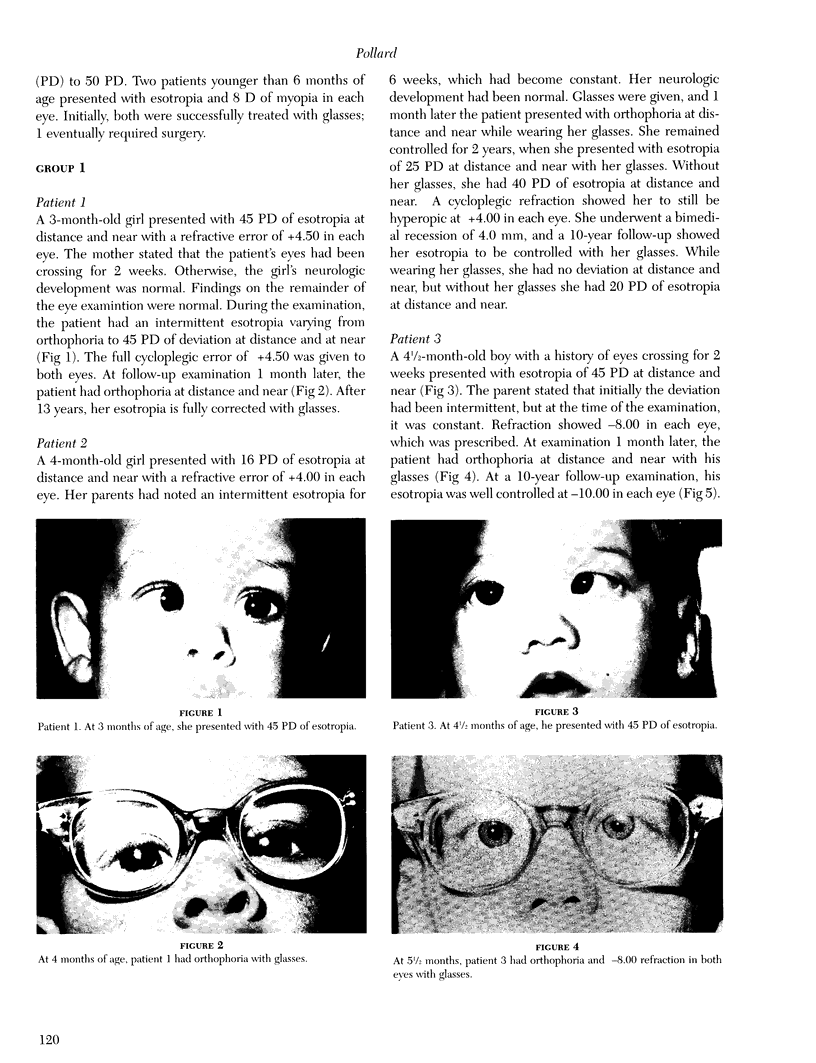
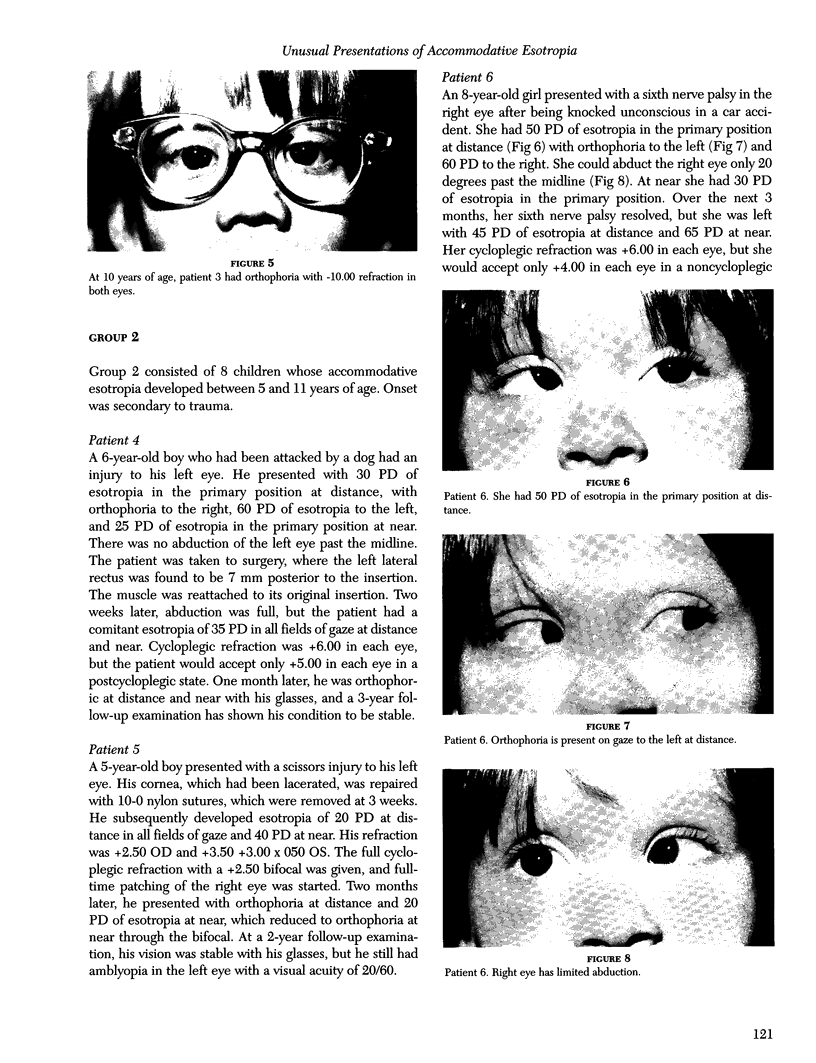
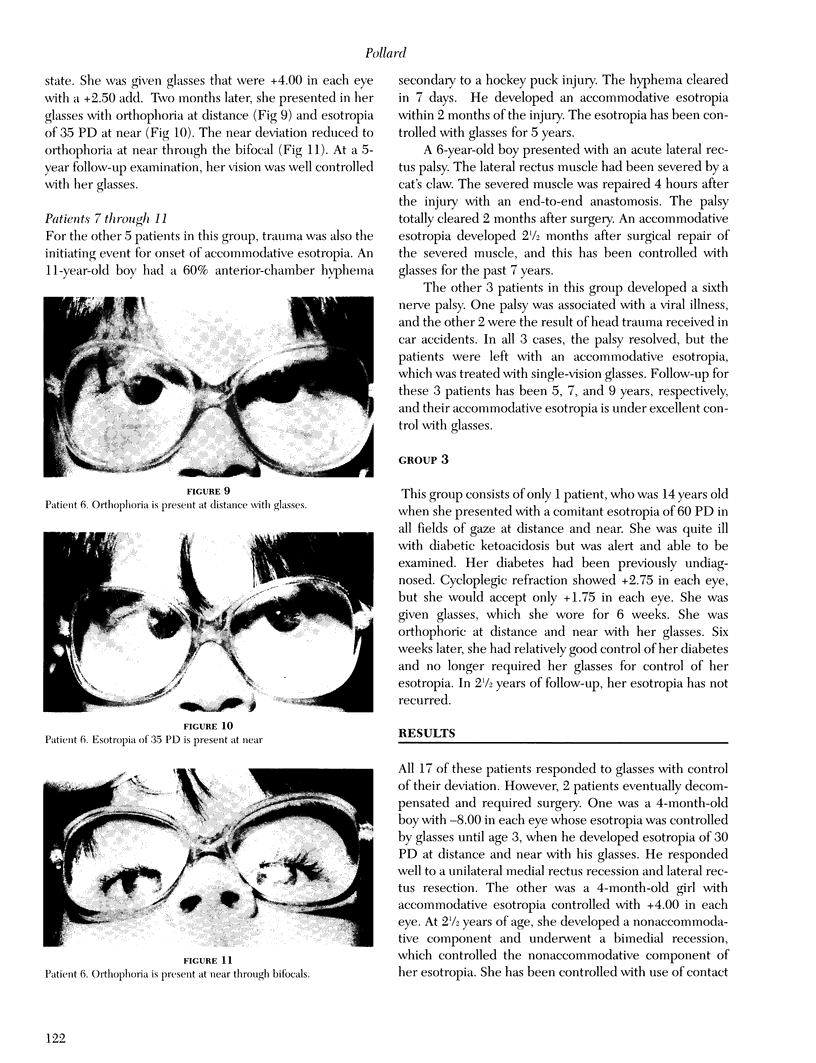
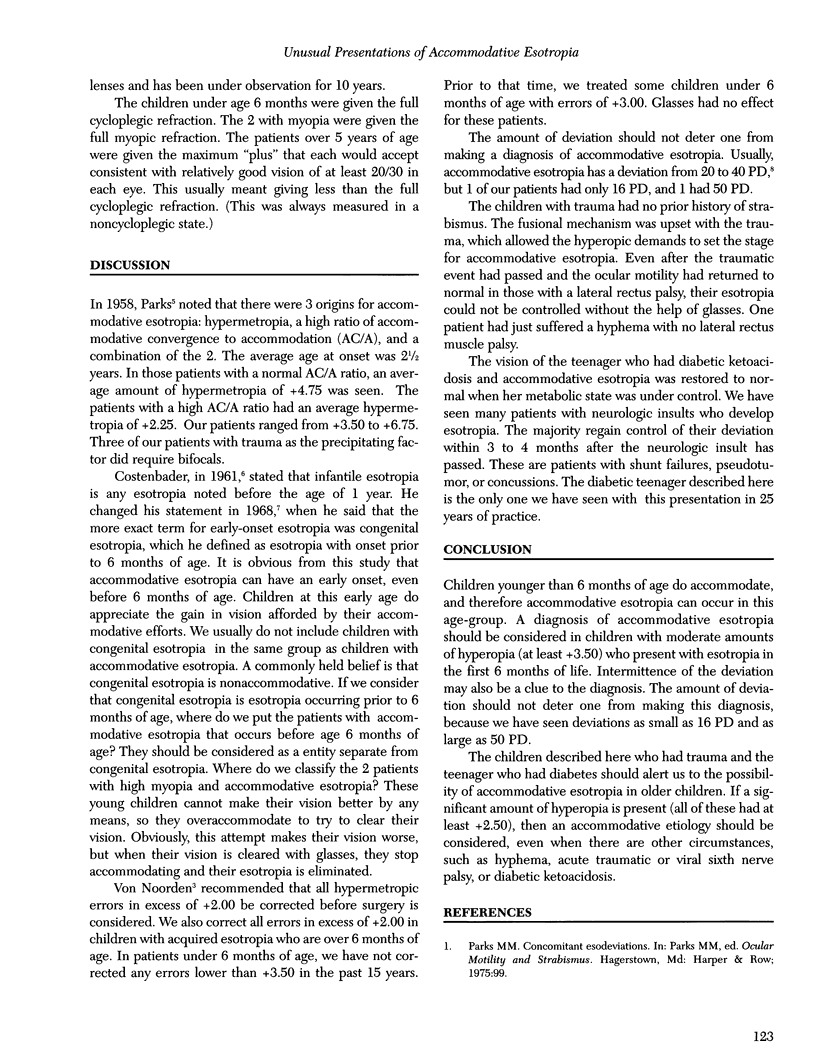
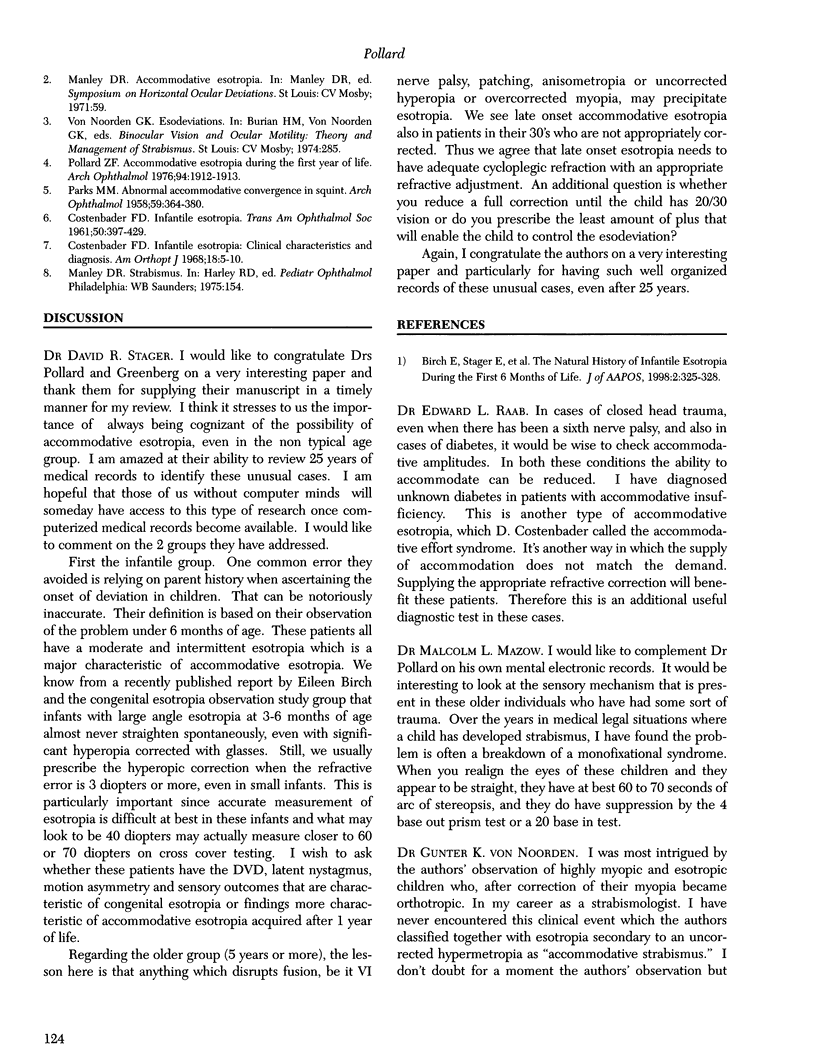
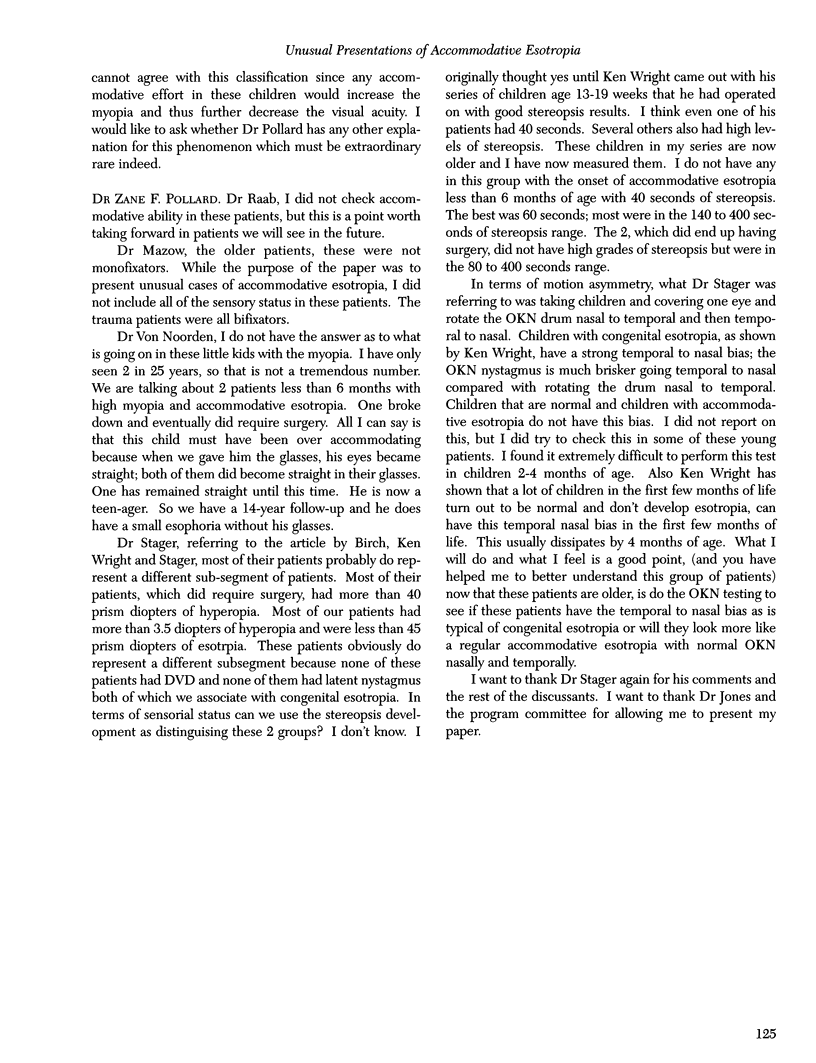
Images in this article
Selected References
These references are in PubMed. This may not be the complete list of references from this article.
- COSTENBADER F. D. Infantile esotropia. Trans Am Ophthalmol Soc. 1961;59:397–429. [PMC free article] [PubMed] [Google Scholar]
- Costenbader F. D. Symposium: infantile esotropia. Clinical characteristics and diagnosis. Am Orthopt J. 1968;18:5–10. [PubMed] [Google Scholar]
- PARKS M. M. Abnormal accommodative convergence in squint. AMA Arch Ophthalmol. 1958 Mar;59(3):364–380. doi: 10.1001/archopht.1958.00940040070008. [DOI] [PubMed] [Google Scholar]
- Pollard Z. F. Accommodative esotropia during the first year of life. Arch Ophthalmol. 1976 Nov;94(11):1912–1913. doi: 10.1001/archopht.1976.03910040622009. [DOI] [PubMed] [Google Scholar]













